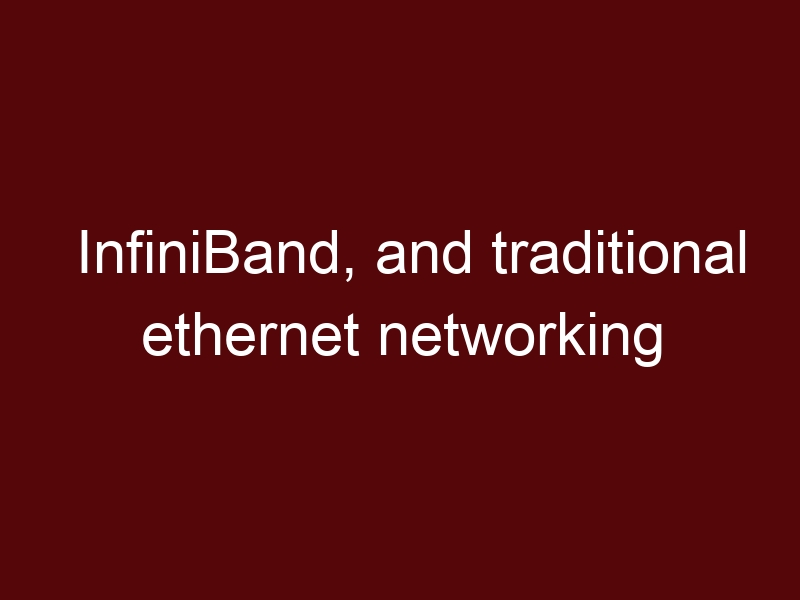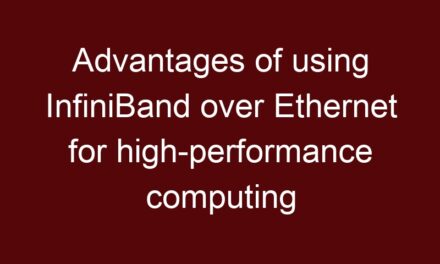InfiniBand is a high-speed interconnect technology designed primarily for high-performance computing (HPC) and data center environments. It offers extremely fast data transfer rates and low latency, making it well-suited for applications that require intensive computational power and rapid data exchange.
Key differences between InfiniBand and traditional Ethernet networking in HPC environments include:
1. Speed and Latency:
InfiniBand provides significantly higher data transfer rates compared to traditional Ethernet. InfiniBand can offer speeds of up to hundreds of gigabits per second, whereas Ethernet typically operates in the range of gigabits per second. Moreover, InfiniBand achieves lower latency, which means data can be transmitted and received with less delay, a critical factor in HPC applications.
2. Message Passing:
InfiniBand was designed with direct support for high-performance message passing, a communication paradigm often used in parallel computing. It allows processes running on different nodes to communicate efficiently without the need for complex protocol translations, leading to improved performance in parallel processing tasks.
3. Remote Direct Memory Access (RDMA):
InfiniBand supports RDMA, which enables data to be transferred directly between memory locations on different machines without involving the CPU. This reduces the CPU overhead associated with data movement, resulting in lower latency and increased overall system efficiency. Traditional Ethernet typically requires the CPU to manage data transfers, which can introduce additional latency and consume CPU resources.
4. Scalability:
InfiniBand was designed to scale efficiently in large cluster environments. Its architecture supports various topologies, including fat-tree and hypercube, which are well-suited for connecting a large number of nodes while maintaining high throughput and low latency. Ethernet can scale to a certain extent, but InfiniBand’s design is more optimized for the demands of HPC clusters.
5. Quality of Service (QoS):
InfiniBand provides advanced Quality of Service mechanisms that allow administrators to allocate bandwidth and prioritize traffic based on application requirements. This is crucial for ensuring that critical HPC workloads receive the necessary network resources, optimizing performance and reducing contention.
6. Power Efficiency:
InfiniBand is designed to be power-efficient, particularly in high-density computing environments. The use of fewer protocol layers and the ability to perform direct data transfers with RDMA contribute to lower power consumption per unit of data transferred.
In summary, InfiniBand offers significantly higher speeds, lower latency, and better support for HPC communication patterns compared to traditional Ethernet. Its architecture is optimized for the demanding requirements of high-performance computing, making it a preferred choice in clusters where performance and efficient data movement are critical.





